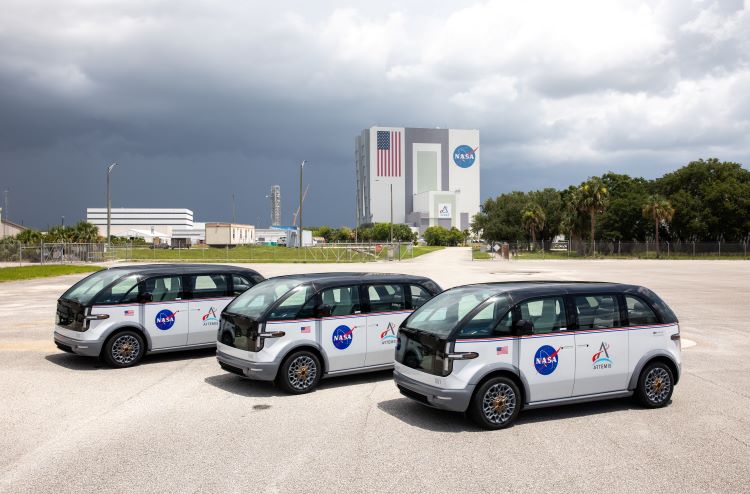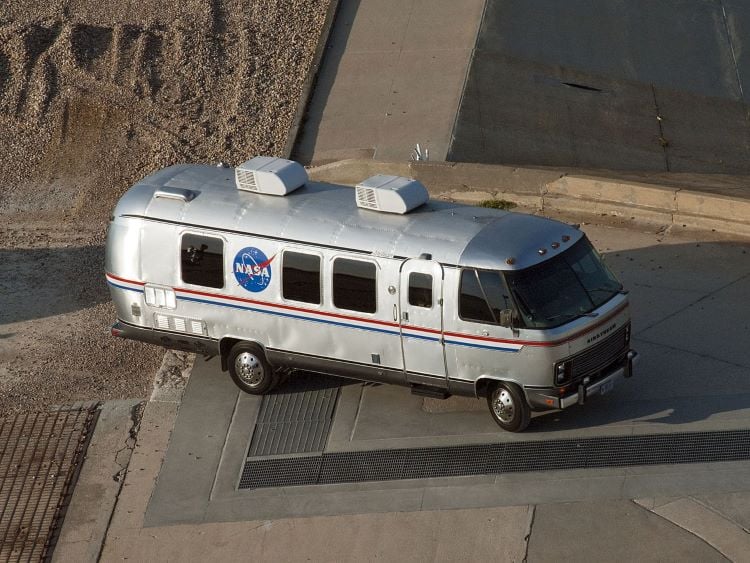In its continued support for the Artemis missions, a three fully-electric, environmentally friendly, and specially designed vehicles were recently delivered to NASA for the purpose of ferrying future Artemis astronauts from their crew quarters to historic Launch Pad 39B before their journey to the Moon. The vehicles were built and delivered by Canoo Technologies Inc. based in Torrance, California, and comes just over a year after NASA awarded Canoo the contract to provide the new vehicles, and almost two years since NASA put out a call for proposals.
Each of the vehicles are designed to seat four astronauts while wearing their crew survival system spacesuits, along with a spacesuit technician, additional support personnel, and specialized equipment for the ride to the launch pad. In addition to the specific personnel and equipment accommodations, the vehicle designs are thoroughly detailed from the interiors to the wheel wells with input from a collaborative creative team that involved NASA Astronaut Office representatives and the Artemis launch director, Charlie Blackwell-Thompson, who is NASA’s first woman launch director and successfully directed the launch of Artemis I in November 2022.
"The collaboration between Canoo and our NASA representatives focused on the crews' safety and comfort on the way to the pad ahead of their journey to the Moon," said Blackwell-Thompson. "I have no doubt everyone who sees these new vehicles will feel the same sense of pride I have for this next endeavor of crewed Artemis missions."
The first mission where these vehicles will be used will be NASA's Artemis II mission, which will send Commander Reid Wiseman (United States), Pilot Victor Glover (United States), Mission Specialist Christina Hammock Koch (United States), and Mission Specialist Jeremy Hansen (Canada) on a 10-day journey orbiting the Moon currently scheduled to lift off from Launch Pad 39B in November 2024. This mission will mirror Artemis I in that it will be a complete checkout of all flight systems, though this time with a full crew. This will set the stage for the first human lunar landing in over 50 years on Artemis III, which is slated to occur sometime in 2025.
These new electric vehicles build upon a rich history of NASA shuttling astronauts from their crew quarters to the launch pad starting with Project Mercury, which used a modified semi-truck and trailer for this task. For Apollo, NASA used a Clark-Cortez motorhome from Apollo 7 in 1967 to the Apollo-Soyuz mission in 1975, then continued using it through Space Shuttle STS-6 before retiring to the Kennedy Space Center Visitor Complex's Apollo/Saturn V Center.
This was followed by a brief use of an Itasca Suncruiser M-22RB for STS-7 and STS-8 before NASA introduced the famous Astrovan, which was used between STS-9 and the last Space Shuttle mission of STS-135. While SpaceX has used Tesla Model X cars to transport Crew Dragon astronauts to the launch pad, this new NASA vehicle will be strictly for future NASA missions.
Will the future Artemis astronauts enjoy the new electric vehicles on their brief drive to the launch pad? Only time will tell, and this is why we science!
As always, keep doing science & keep looking up!
 Universe Today
Universe Today


